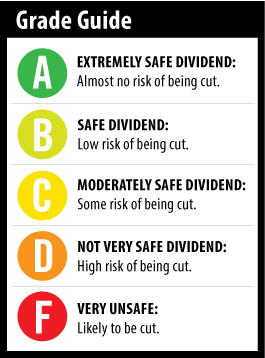 It’s not often you find a company involved with biotech that pays a healthy yield. Fortunately, reader Gerry S. suggested I take a look at PDL BioPharma (Nasdaq: PDLI) for today’s Safety Net column.
It’s not often you find a company involved with biotech that pays a healthy yield. Fortunately, reader Gerry S. suggested I take a look at PDL BioPharma (Nasdaq: PDLI) for today’s Safety Net column.
One thing to know, PDL isn’t a biotech company. It does not attempt to cure cancer, diabetes or other diseases. Instead, it manages patents on antibodies and royalty assets.
For example, let’s say you’re the CEO of a biotech company trying to create a new lifesaving drug. Through your firm’s research, you find that it needs certain antibodies to make the new drug.
[ad#Google Adsense 336×280-IA]Some of the antibodies, however, are already patented by PDL.
At that point, you’ll have to ask PDL to license out its patent on that antibody.
In turn, you’ll pay them a royalty for it.
And PDL collects 2.125% royalties on some of the biggest cancer drugs on the market including Roche’s Avastin and Herceptin.
Over the past four quarters, Avastin was the 16th best-selling drug and generated $2.6 billion in revenue while Herceptin brought in $1.9 billion.
As a result, PDL is able to offer shareholders a strong dividend yield of 6.6%.
Last week, the company said it will pay $0.15 per quarter in 2014.
Because the company doesn’t develop drugs, its expenses are quite low. There are no costs of goods, no research and development costs. Its main expenses are administrative and taxes. The company acts more like a royalty trust than a biotech or pharmaceuticals company.
For example, in the third quarter of 2013, the company generated $97 million in revenue. It had only $8 million in administrative expenses, leaving it with $89 million in operating income. After paying $6 million in interest, $30 million in taxes and $3 million in other expenses, it was left with net income of $56 million.
But if you’ve been following the Safety Net for any time, you know that I pay much more attention to cash flow than net income.
Flowing Like a River
Cash flow is a more accurate indicator of a company’s ability to pay the dividend.
PDL’s free cash flow was $46 million in the quarter. It paid out $21 million in dividends, giving it a payout ratio of just 46%. That means the company pays out only $0.46 in dividends for every dollar in cash flow.
I usually want to see the payout ratio below 75%. That way if the company has a bad year or two, the dividend is not in jeopardy. With PDL, you can see that there is plenty of room for a downturn in cash flow without worrying about the dividend.
Wall Street currently doesn’t have estimates for PDL’s cash flow, but earnings are forecast to rise 20% in 2014 and 14% annually over the next five years. So cash flow should be on the rise, as well.
The only thing keeping PDL from getting a perfect rating from me is its dividend track record. It has paid dividends since 2008.
 Starting in March 2009, it paid special dividends of $0.50 per share quarterly with one quarter’s dividend at $1.67.
Starting in March 2009, it paid special dividends of $0.50 per share quarterly with one quarter’s dividend at $1.67.
But in March 2011, it said it will now pay a “regular” quarterly dividend of $0.15 per share that will be more reliable than the special dividends.
So what we have here is a company that will receive a piece of some of the biggest cancer drugs in the world, whose earnings and presumably cash flow will climb for the foreseeable future, whose cash flow easily covers the dividend and a solid near-term track record of paying the shareholders a respectable yield.
PDL’s dividend is reasonably safe, even for a stock that pays nearly 7%.
Dividend Safety Rating: B
— March Lichtenfeld
[ad#IPM-article]
Source: Wealthy Retirement

